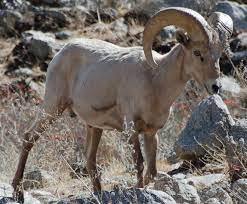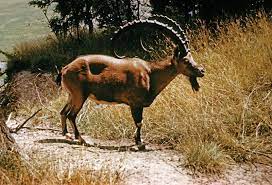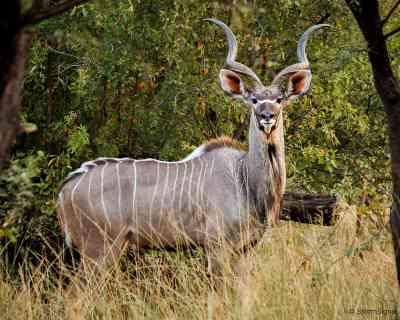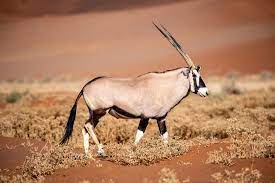In the realm of wildlife, a group of creatures stands out for their captivating features and awe-inspiring presence—Curvy Horned Animals. These magnificent beings, adorned with curvaceous and intricately designed horns, have long captured the fascination of both nature enthusiasts and researchers alike. From the iconic bighorn sheep of North America to the elusive Arabian oryx roaming the deserts, the animal kingdom boasts an array of species that flaunt these remarkable curved appendages. Beyond their striking appearance, these horns serve essential purposes, aiding in defense, dominance displays, and even attracting potential mates.
Venturing into the world of Curvy Horned Animals unveils a mesmerizing blend of biology and behavior. Each species brings a unique story of adaptation, evolution, and survival, honed over millennia. Join us as we delve into the diverse landscapes these creatures call home, unravel the mysteries behind their curvy horns, and gain a deeper appreciation for the extraordinary beauty that nature has sculpted.
List of Curvy Horned Animals
- Wild Sheep
- Ibex
- Markhor
- Addax
- Kudu
- Gemsbok
- Chamois
- Tahr
- Rocky Mountain Goat
- Markhor
- Arabian Oryx
Table of Contents
Definition and Distinctive Traits of Curvy Horns in Animals
Curvy horns, also known as twisted or spiral horns, are a remarkable feature found in various animal species. Unlike straight horns, which project linearly, these distinctive appendages exhibit captivating twists and turns, creating an aesthetic marvel. Curvy horns are primarily composed of keratin, the same material that makes up human hair and nails, which adds to their strength and durability. The curvature of these horns can vary greatly, ranging from gentle spirals to tightly coiled twists, and their sizes can range from relatively small to impressively large, depending on the species.
Significance of Horns in Different Facets of an Animal’s Life
Curvy horns serve multifaceted roles in an animal’s life, playing pivotal roles in survival, communication, and reproduction. One of their most vital functions is defense. Animals equipped with these ornate horns often employ them as formidable weapons against predators. The intricate curves not only enhance the overall visual impact but also add strength to the horn’s structure, making it a powerful tool in warding off threats.
Additionally, curvy horns play a crucial role in intra-species interactions. They are used for dominance displays within herds or groups, establishing hierarchy and reducing the need for physical combat. These captivating horns also play a role in attracting mates during the breeding season. The size, curvature, and health of an animal’s horns can convey valuable information about its genetic fitness and overall health to potential mates.
Wild Sheep:

The curly horns of wild sheep serve as a remarkable adaptation to their rugged habitats. These impressive horns, found in both males and females, aid in defense against predators and in establishing dominance within their social groups. The curvature of their horns is often a reflection of age and health, making them valuable indicators in mate selection. Additionally, these horns have cultural significance in various societies, symbolizing strength and resilience.
Ibex:

Ibex, mountain-dwellers known for their distinct curved horns, employ these structures for multiple purposes. The prominent, ridged horns are a symbol of status and a tool for males to compete for mates. Notably, the curvature of the horns is linked to age and dominance. Their twisted appearance aids in gripping onto rocky surfaces, facilitating balance and agility during treacherous climbs. This adaptive trait is crucial for survival in their harsh alpine environments, allowing them to access food and evade predators effectively.
Markhor:

Markhor, with its corkscrew-like horns, holds cultural and ecological significance. The intricate, twisted horns are a testament to its virility and dominance, influencing mate selection and hierarchical structures within groups. Apart from their role in mating rituals, these horns also offer protection against predators, as markhor uses them to defend against threats. These striking horns have also drawn attention to conservation efforts, symbolizing the unique wildlife of their habitat and encouraging preservation initiatives.
Addax:

The addax, a desert antelope species, boasts impressive, tightly twisted horns. These distinctive horns are effective adaptations for its arid environment. They help in digging for water and plant roots in the parched soils of their habitat. Additionally, the horns are utilized in territorial disputes and courtship rituals. Unfortunately, the rarity of addax in the wild has spurred conservation efforts to protect these animals and their unique attributes, including their specialized curly horns, which are emblematic of their survival strategies.
Kudu:

The kudu’s magnificent spiral horns serve both functional and symbolic roles. Found in males, the horns can grow long and beautifully curved, enhancing their elegance and attractiveness to potential mates. Acutely developed senses aid in detecting predators through these twisted horns, allowing them to hear even faint sounds. The twisting nature of their horns provides an advantage in navigating dense vegetation. Kudu horns also carry cultural significance in some African societies, representing strength and nobility.
Gemsbok:

The gemsbok, adapted to arid environments, features straight yet slender horns that curve backward. These horns play a pivotal role in thermoregulation. By increasing blood flow to the horns, gemsbok can release excess body heat, helping them survive in harsh desert climates. Additionally, the horns are used defensively against predators and in contests for mates. Their distinctive appearance and survival strategies have made the gemsbok a symbol of resilience in challenging landscapes.
Chamois:

The chamois, a nimble mountain-dweller, possesses short, hooked horns. These horns aid in maintaining balance on rocky terrain and are also used in sparring among males during the rutting season. The curvature of the horns aids in gripping onto narrow ledges and in climbing steep slopes. Chamois horns also carry cultural significance in regions where they are found, representing adaptability and tenacity in the face of rugged landscapes.
Tahr:

Tahrs, adapted to mountainous habitats, exhibit curved horns that play a crucial role in their survival. These horns are used for defending territories and mates. The curvature provides an advantage in maneuvering through rocky terrain and dense vegetation. Tahr populations are often closely linked to the health of their habitats, making them important indicators of ecosystem well-being. Their distinctive horns and behaviors have captured the attention of researchers and conservationists striving to protect these unique species.
Rocky Mountain Goat:

The Rocky Mountain goat’s distinctively curved horns are iconic features of this North American mountain-dwelling species. Both males and females possess these impressive horns, which aid in defense against predators and are used in dominance displays. The curvature assists in navigating rugged landscapes, and the horns’ annual growth rings offer insights into the goat’s age and health. Their presence is a symbol of the wild and untamed nature of North America’s mountainous regions.
Arabian Oryx:

The Arabian oryx, a desert antelope, possesses long, elegant, slightly curved horns. These horns, slender and sharp, are used both in territorial disputes and as tools for digging in search of water and food in desert sands. The curvature enhances their ability to navigate through the arid landscape while preserving energy. Arabian oryx populations have faced significant conservation challenges, and the distinctiveness of their horns contributes to their cultural and ecological significance as symbols of survival in harsh environments.
Curvy horns, found in various animal species, serve a range of functions and uses that are vital for their survival, reproduction, and adaptation to their environments. Here are some common functions and uses of curvy horns in animals:
Function and Uses of Curvy Horns
- Defense and Predation Deterrence: One of the primary functions of curvy horns is defense against predators. Animals like wild sheep, markhor, and ibex use their impressive horns to ward off predators by engaging in displays of dominance or actively using their horns as weapons. The curvature and size of the horns can be indicators of an individual’s strength and capability to defend himself.
- Mate Selection and Competition: Curvy horns often play a crucial role in mate selection and competition for reproductive rights. In species like deer, antelope, and bighorn sheep, males with larger and more intricately curved horns are often preferred by females during the mating season. These horns showcase genetic fitness and vitality, making them attractive to potential mates.
- Social Hierarchy and Dominance: Animals with curvy horns establish hierarchies within their social groups. The size, shape, and condition of the horns are used as signals to determine an individual’s rank within the group. Dominant individuals with more impressive horns are better able to access resources and mates, contributing to their overall reproductive success.
- Thermoregulation: Some animals, like the gemsbok, use their horns for thermoregulation in hot climates. These animals increase blood flow to the horns, allowing excess heat to dissipate and helping them regulate their body temperature more effectively.
- Navigational and Environmental Adaptation: Curvy horns can aid animals in navigating challenging terrains, such as rocky mountains or dense forests. The curvature and shape of the horns provide them with stability and grip, allowing them to move more securely through their habitats. This adaptation is particularly valuable for species like chamois and tahr that inhabit rugged landscapes.
- Resource Acquisition: Certain animals, like the Arabian oryx and addax, use their curvy horns to access resources in their environments. They use their horns to dig for water, food, or plant roots in arid desert soils where such resources may be scarce.
- Species Identification: The distinctiveness of curvy horns can help individuals of a species recognize and identify each other. This is especially important in social animals that live in groups, as it facilitates cooperation, communication, and reduced intergroup conflict.
- Cultural and Symbolic Significance: In addition to their biological functions, curvy horns often hold cultural and symbolic importance in various societies. They can be featured in rituals, art, and stories, serving as symbols of strength, resilience, and natural beauty.
Threats to Curvy-Horned Animals
Curvy-horned animals face an array of threats that endanger their survival. Habitat loss and fragmentation due to human activities like agriculture and urbanization disrupt their natural ranges, limiting resources and migration routes. Poaching for their impressive horns, sought after for traditional medicine and ornamental purposes, drives some species, like rhinos and ibex, to the brink of extinction. Climate change poses challenges by altering habitats and affecting food availability. Human-wildlife conflicts arise as these animals are pushed into closer proximity to communities, leading to retaliatory killings. Conservation efforts are crucial to safeguard these remarkable creatures and preserve their essential roles in ecosystems.
Conservation Strategies For Curvy-Horned Animals
Conservation strategies play a pivotal role in safeguarding curvy-horned animals and their habitats. Here are some effective approaches:
- Habitat Protection and Restoration: Establishing protected areas, national parks, and wildlife reserves helps conserve the habitats these animals depend on. Efforts to restore degraded habitats are also crucial for providing suitable environments for their survival.
- Anti-Poaching Measures: Strong anti-poaching initiatives, including increased patrols, intelligence gathering, and stricter law enforcement, are vital to combat the illegal trade of curvy-horned animals’ body parts and products.
- Community Involvement: Engaging local communities in conservation efforts fosters a sense of ownership and responsibility. Providing benefits like alternative livelihoods, education, and healthcare can reduce human-wildlife conflicts and poaching.
- Translocation and Reintroduction: When viable, translocating animals to safer habitats or reintroducing them into areas where they were once present can aid in expanding populations and genetic diversity.
- Research and Monitoring: Scientific studies on curvy-horned animals help understand their behaviors, ecology, and population dynamics. Regular monitoring ensures timely responses to emerging threats.
- Collaboration and Partnerships: International collaboration among governments, NGOs, researchers, and local communities enhances conservation effectiveness by sharing knowledge, resources, and best practices.
- Climate Resilience: Addressing climate change impacts is crucial. Developing strategies to help curvy-horned species adapt to changing conditions and protecting crucial migration corridors can increase their resilience.
- Public Awareness and Education: Raising awareness about the importance of curvy-horned animals and their conservation encourages public support and responsible behavior toward wildlife.
- Legislation and Policy: Enacting and enforcing strong wildlife protection laws and policies is essential to deter illegal activities and promote conservation.
- Genetic Management: Maintaining genetic diversity through managed breeding programs ensures the long-term health of captive populations and helps prevent inbreeding.
- Technology and Innovation: Utilizing modern technologies such as remote sensing, DNA analysis, and advanced tracking methods aids in monitoring and understanding these animals’ behaviors and needs.
- Sustainable Livelihoods: Promoting sustainable land use practices, ecotourism, and responsible hunting can provide economic incentives for local communities to protect curvy-horned species and their habitats.
Final Words
In the intricate tapestry of Earth’s biodiversity, curvy-horned animals stand as remarkable marvels shaped by evolution and adaptation. These unique horns embody a delicate balance of functionality and symbolism, serving as tools for survival, communication, and beauty. However, these species face an ever-pressing threat from habitat loss, poaching, and environmental changes. Our responsibility to these creatures extends beyond their captivating appearance—it encompasses the preservation of ecosystems and the intricate relationships that sustain life on our planet. Through collaborative conservation efforts, public awareness, and unwavering commitment, we can ensure that these curvy-horned wonders continue to grace our world, inspiring awe and contributing to the vibrant symphony of nature.
Reference:
- https://www.nationalgeographic.com/animals/article/animals-science-horns-africa-rhinos
- https://animals.sandiegozoo.org/animals/spiral-horned-antelope
- https://www.feri.org/beautifully-horned-animals/

Zahra Makda
Growing up enjoying the beauty of my village, a good passion for nature developed in me from childhood. Following my passion for the natural world, I have chosen zoology for my graduation, during my undergraduate degree, I participated in many nature trails, bird watching, rescues, training for wildlife conservation, workshop, and seminars on biodiversity. I have a keen interest in invertebrate biology, herpetology, and ornithology. Primary interests include studies on taxonomy, ecology, habitat and behavior.









